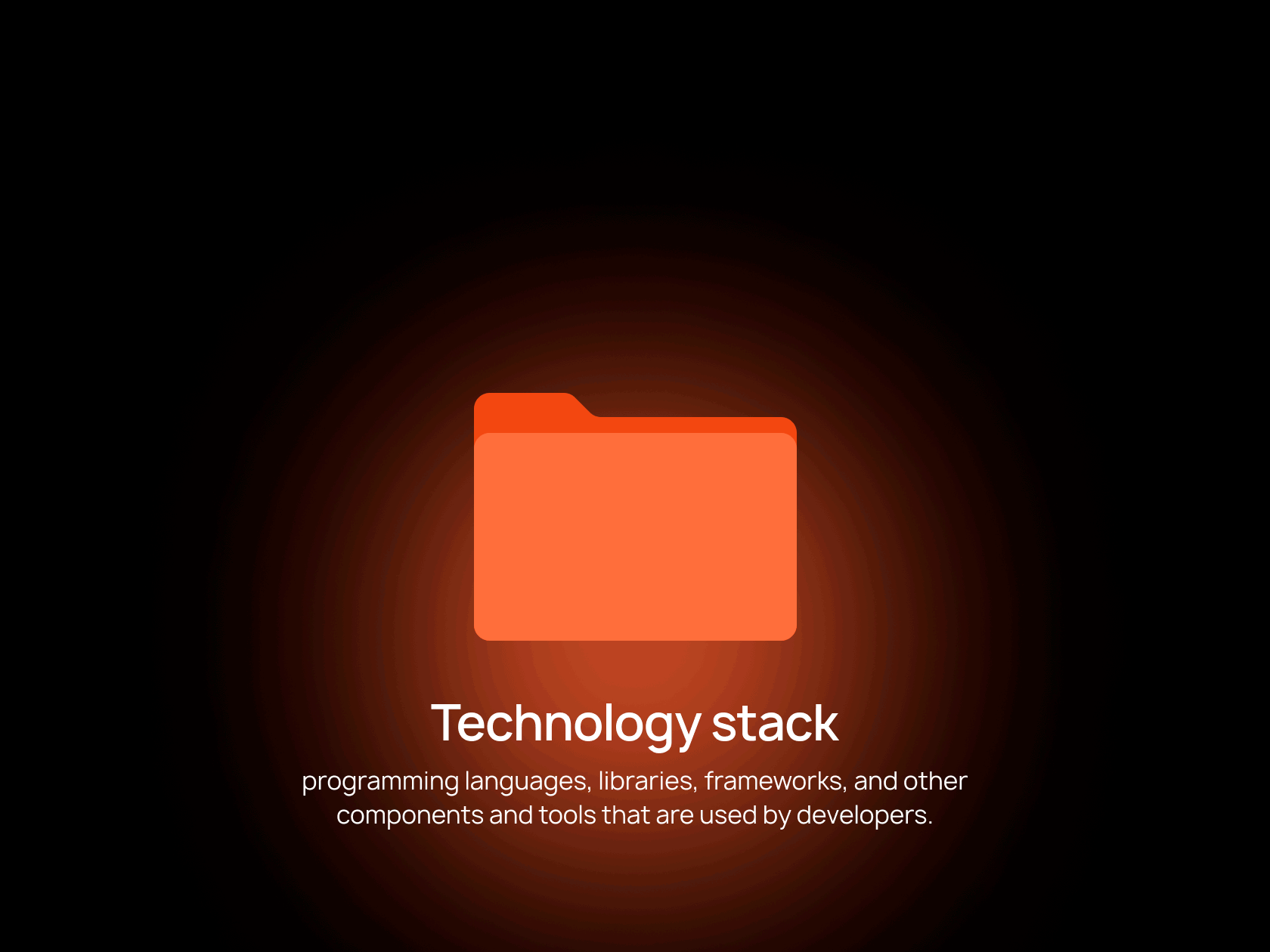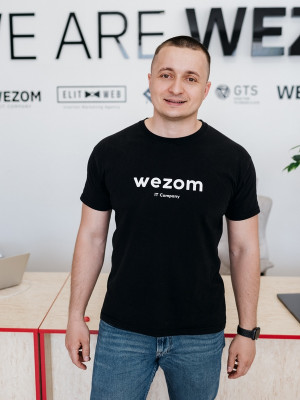Choosing the right web app stack is vital both in terms of efficiency and convenience. Therefore, if you possess the right knowledge, you can protect yourself from the risks that this choice involves and make faster, knowledge-driven decisions.
The question: “How to choose a tech stack?” may be highly confusing and seem difficult if you are not familiar with what entails, but don’t worry as we’ve got you covered.
Let’s have a look at how to choose the right technology stack for your web application, and how to choose wisely.
What is a Technology Stack?
In general, the technology stack is one of the fundamental aspects of software development. A technology stack is a set of technologies that are used in building a software solution. This set includes programming languages, frameworks, libraries, and other components and tools that are used by developers.

Defining the Structure of Your Web Project
A web app technology stack is a combination of all of the software tools and programming languages in your app. Frontend and backend parts are different parts for different purposes.
A stack forms when different layers of the app are built atop each other. The technologies within the web stack are also heavily interconnected. Let’s have a look at the standard elements within the frontend and backend development and what they consist of.
Frontend
Frontend, or the client-side part of an application, requires a separate approach to technology and has its own peculiarities. We asked our developers what technologies they commonly use in their work and here's what they had to say:
What technologies do we most often use on the front and on the back?
The tech stack for frontend development in our work typically consists of Typescript, Next, and GraphQL. However, it may depend on the concrete case. As for the details, the stack includes the following nuances:
Programming Language
The language we commonly use is Typescript. This choice allows us to reduce the number of mistakes made during the process of development. Usually, Typescript code is converted to Javascript, because it is understood by browsers.
Technologies
We use SPA technology because it allows us to create web applications that work without the need to reload the page — a core principle of modern SPA software development focused on speed and seamless user experience. This reduces the number of requests to the server and works way faster. And development on SPA is more structured and allows you to easily scale the application.

Plugin
The SPA technology is implemented by us using the React plugin. We chose it because of its high speed and good support for server rendering. Also, React has a large number of plugins and a sizable community.
Frontend Frameworks
Typically, we don't use pure React, but the Next framework is based on React. Next has support for server rendering, which is necessary for public web applications (stores, landing pages, etc.), outstanding navigation, and many other features that allow you to create a reliable and fast application, and make the development itself convenient and fault-tolerant.
For UI, we use two frameworks: Material Design and Ant Design. Material is more flexible and already familiar to us from Google products. We use it to develop public sites that require a combination of elegant design and functionality. Ant is more strict, but it has more various components, it is more functional and less flexible. Ant is ideal for dashboards and CRM, where we leverage it.
Tools We Use for Frontend Web Development
As for the libraries, generally, it’s React, Next, Apollo, MUI, Ant Design. Also, we use GraphQL technology to connect the frontend with the backend. It allows you to create requests to the server using only one endpoint at a time, but the form of the request is built using a special request language.
Thus, the frontend can form a request and get only the necessary data from the backend. This reduces the load on the server and makes it run faster. We chose Apollo as a plugin that allows you to implement GraphQL technology. It works well in combination with other technologies.
For styling, we use CSS-in-JS technology, which allows you to create styles using Javascript or Typescript. This allows styles to be stored along with code inside components and makes the code more structured.
We also use PWA technology to create a real application for the operating system based on the site. Visually, such an application does not differ from native applications, but in the middle, it has the advantages and disadvantages of a browser.
Backend
When it comes to the backend technologies, WEZOM experts have a certain approach that includes paying attention to the project’s details.We asked them what they typically include in their work.
What are some of the backend technologies that you use most commonly in your work?
As for the backend technologies, we have universal programming languages: PHP, and Java (the choice of language depends on the specifics of the project). Also, we have:
- Universal programming languages;
- Frameworks;
- Technologies;
- Libraries;
- Database management systems.
When we work with Java, our work usually involves the use of the following technologies and tools:
- Java 17;
- Spring (Boot, Data, Security, MVC);
- RESTful API or GraphQL;
- gRPC;
- Unit and Integration testing;
- SQL, NoSQL databases;
- Git;
- Elasticsearch;
- Rabbitmq/Kafka;
- Docker;
- UML.
For PHP, we use the following technologies and tools:
- Laravel;
- RESTful API or GraphQL;
- Unit and Integration testing;
- SQL, NoSQL databases;
- Git;
- Elasticsearch;
- Rabbitmq;
- Docker;
- UML;
Programming Languages
We have separate stacks for Java and PHP which are dictated by the specific features of these languages.
Java is one of the most popular and widely used programming languages and has many advantages such as:
- Scalability: Java supports scalability, which means that applications can be designed to deal with large amounts of data and transactions.
- High performance: Java has good performance due to the use of multithreading and code optimization.
- Security: Java has a built-in security system that provides protection against various types of attacks such as viruses, worms, trojans, etc.
All in all, Java is a powerful and flexible programming language that can be used to create many different kinds of applications, including mobile applications, web applications, server applications, games, and more.
Our work with PHP includes using another set of libraries that will be mentioned later.
As PHP is a programming language that is widely used to create dynamic web pages and web applications, we also use it in our work. Some of its benefits include:
- Fast Deployment: PHP is one of the fastest and easiest programming languages, which makes it very attractive for quickly deploying web applications.
- Large community of developers: PHP has a huge community of developers who have developed many libraries, frameworks, and extensions. This allows developers to quickly and easily solve various problems.
- Security: PHP has many built-in security features that help protect websites from hacks and other threats.
- Compatible with most servers: PHP can run on most web servers, including Apache, IIS, and Nginx. This makes it easy to integrate with existing web infrastructures.
Overall, PHP is a popular and highly effective programming language for building dynamic web applications due to its simplicity, speed, safety, and rich functionality.

Technologies, Frameworks, Libraries
Some of the technologies we use are well-known due to their distinctive features that enrich the process of web app development. It is important to highlight their benefits to describe the general specifics of how our stack works. Let’s have a look at some particular examples.
We use the Laravel framework to improve performance as it is a next-generation PHP framework. Its design and services make it especially innovative and advanced. Also, using libraries like gRPC, Rabbitmq, which are considered some of the most innovative libraries of today, and Docker – an open source tool that automates the deployment of applications inside Linux containers.We are able to add different types of the potential offered by technology to our projects. In addition to it, we leverage Git – a software tool that enables version control of the source code.
Other libraries, including Elasticsearch, allow us to add the necessary support to the stack, and cover the need for innovations.
Databases
Databases are represented as information in an organized way. They include data records or file aggregations. As there are numerous types of databases, you need to be aware of the features of the specific databases.

SQL and NoSQL are different database types which have their own strengths and weaknesses depending on the concrete needs of the application.
SQL (Structured Query Language) databases have a clearly defined data scheme, which means, all of the data in the database should correspond with it. This means, in turn, that the data in tables has special interconnection. The benefits of SQL databases include:
- A clearly defined data scheme: SQL databases allow to easily process and analyze data as it is structurized.
- The language of queries: SQL databases present a powerful language of queries for ejecting and processing data.
- Safety: SQL databases offer a high level of security as they offer the functionality of control of the access to data.
NoSQL databases, unlike SQL databases, don’t usually have a clearly defined data scheme. Instead, they are represented in a form of documents, collections or graphs, and can be more flexible or scalable. The advantages of NoSQL databases include:
- Flexibility: NoSQL databases allow us to change the data structure fast, and you won’t need data scheme migration for that.
- Scalability: NoSQL databases can easily scale, helping to process larger amounts of data and maintain a high level of productivity.
- Accessibility: NoSQL databases can provide a high level of data accessibility and fault tolerance, thus enabling quick restoration after system errors.
Depending on the requirements of an application, and its particular demands, you can choose whether you need SQL or NoSQL databases.
How to Choose a Tech Stack?
There are a lot of different technologies when it comes to front-end and back-end development. However, different projects may require different development stacks. Time-proven technologies are not necessarily the best choice for all projects, while new cutting-edge technologies may not have the needed functionality or enough support.
We asked our experts: How is the entire technical technology stack for web development defined for projects of different types: web applications, and mobile applications? By what criteria and who is responsible for this?
Together with the architect, we work out business requirements, design the system and select technologies, then look at the available resources and leave the optimal ones.
Next, when the technologies are defined, we create a prototype of the project and test it to make sure that it meets the requirements of the project and works as expected.
For Web Application Development
For web app development, our experts look at the available resources for the projects and evaluate the project needs.
Our experts usually use an individual approach and evaluate the needs of the project.
In our work, if the time for development, or budget, is limited, we typically use our CMS system built on Laravel. It includes an administration panel that is ready for the work. If the project is ambitious enough and can potentially scale, we usually use our stack that includes Typescript+Next+GraphQL, and MUI or Ant Design framework.
Functional Requirements
In general, it is about the functions that your web app needs to have. There is a correlation between technologies and the software architecture, so technologies deserve your attention, too. Functional requirements also relate to the complexity of the project and, eventually, the choice of the tech stack.
Non-Functional Requirements
Non-functional requirements are your expectations from the web application, like scalability, security, performance, and other parameters. There is a set of requirements for each of these aspects.
Steps Not to Lose a Fortune Developing a Web App
There are certain steps that will help you protect yourself from losing literally a huge amount of money on web development. Firstly, you need to ensure the clarity of your specifications. Be precise with your project specification — reviewing an example of technical specification can help ensure developers prepare a precise estimate.
Also, it is advisable to prepare an MVP first. By making and testing it, you can minimize potential issues And, finally, leverage ready-made solutions when possible.
Bottom Line
If you are faced with the task of choosing the suitable technology stack, know that this is an individual task. Unfortunately, there is no one-size-fits-all solution, but there is a fairly wide range of options and options on the market. Your rational attitude to the tasks of your product and the selection of a suitable technology stack that meets all requests will be decisive here.

Realistic expectations can also help you a lot, because even very high technology may not be up to the task. The whole point here is to understand what specific tasks will be set in the work, and what your tech sack will have to deal with exactly. Therefore, having provided for all the nuances, you will reduce the risks, because sometimes there is a big difference between our theoretical understanding and practical work. However, do not worry about the complexity of the choice: in our time, technology can do everything!